UPDATE II: Here are two more Willys Make Sense ad that were featured in Sunday newspapers (seller indicates both were from 1951):
This one is currently on eBay for $20:
This one is currently on eBay for $20:
===========================
Originally posted May 29, 2019: Here’s another Willys Makes Sense ad from the February 13, 1951, issue of the Evening Star newspaper that differed from the others.
==================
Original Post: May 21, 2019:
In 1950, Willys-Overland launched a Willys Makes Sense advertising campaign. Unlike past campaigns, such as the 1948 City and City ads, which were about encouraging the sales of wagons and positioning the wagon as a luxury vehicle, the Willys Makes Sense appears to have been organized to re-imagine how the public should view the brand.
Before I get too deeply into this, I’d like to note that the way I’d prefer to write this article is to document specific reasons behind Willys-Overland’s decision to make such a big change. Unfortunately, I don’t have access to enough financial material as I’d like (especially annual reports). So, conjecture and theory will have to do for now.
BACKGROUND: After WWII, pent up demand meant lots of sales for automakers. That could explain, in part, why post-war sales were pretty good for Willys-Overland. For example, sales increased from almost 79,000 jeeps in 1946 to 159,000 jeeps in 1948. But, in 1949, sales plunged to almost half, coming in at 86,000. I don’t have details into why sales dropped so much, but likely parts or material shortages or labor disputes could have had an impact. Certainly, the recession of late 1948 – late 1949 didn’t help sales at all!
Future sales might not have looked too good for 1950 and beyond either. As of 1950 the US produced 76% of automobiles, but given the post-war rebuilding/resurging of industry world-wide, I expect automakers must have realized that international competition would return soon (by 1955 US market share would drop to 67%). This may have stimulated management to clean up their branding as soon as possible to protect against increasing competition (remember that Willys-Overland had expected to sell 25% of their autos internationally, based on the 1946 Fortunate Magazine article).
Another issue Willys-Overland was facing was that going into 1950 the company still didn’t have a registered trademark for the term JEEP (wouldn’t get it until June of 1950). Added to that, the company was not only producing 4WD 1/4 ton jeeps, trucks, and wagons, but also 2WD trucks, wagons, Jeepsters, and an upcoming automobile. Such a portfolio of non-4WD vehicles must have concerned management that it wasn’t just a “jeep” company; so the challenge of how the company should represent itself to dealers and consumers had to have become an issue.
Finally, in a similar vein, up until 1950, the company had been positioning itself as the ‘Jeep’ company, with ads that emphasized the Universal ‘Jeep’, the ‘Jeep’ Truck and the ‘Jeep’ Wagon. Perhaps with the introduction of the Jeepster (note that the company did not call it the ‘Jeep’ Jeepster nor was there any ‘Jeep’ branding on the introductory brochure), the branding issue must have really came to a head. Because of the entrenched nature of Willys-Overland’s efforts to become ‘Jeep’, management may have felt that a company-wide retooling of the company’s branding was in order.
Perhaps one, two, or all of these issues resulted in the 1950 rebrand of the company as a WILLYS manufacturer with a wide range of 2WD and 4WD vehicles for sale. (For a look back at 1952, see Derek’s post “When the CJ-3B Was New“).
NON-JEEP BRANDED ADS:
Willys-Overland began 1950 with an ad that felt similar to past ads, but excluded the ‘Jeep’ brand. For example, in January of 1950 Willys published this ad in the Saturday Evening Post. Note the reference to ‘Jeep’ has been replaced with a small ‘Jeep’ badge.
As did Colliers Magazine on January 21, 1950:
In March of 1950, Willys-Overland published an issue of Salesbuilder. Like the name indicates, it was a magazine produced to help educate the sales force. There’s no evidence of ‘Jeep’ anywhere on any of the pages (apparently, I haven’t published either of my 1950 Salesbuilder magazines … that will happen in the next few days).
By April 1950, the ‘Jeep’ badge and brand was gone from magazine ads altogether. This was especially noticeable on the introduction of the Willys Hurricane engine, as that power plant would be installed in upcoming 4WD jeeps as well as the 2WD vehicles.
Even the truck ads had the ‘Jeep’ Truck branding removed:
So, even before Willys-Overland launched its Willys Makes Sense campaign, the company had begun shifting its advertising away from ‘Jeep’ and toward WILLYS.
WILLYS MAKES SENSE:
The earliest documents I can find for the Willys Make Sense campaign were dealer-related training documents printed in June of 1950. Throughout these documents you’d have to search to find ‘Jeep” anywhere.This first one
There were other training documents produced as well, such as Joe Booth Gets a Break, Qualifty and Present, The Other Side of the Picture, Selling the Unseen Values, What Good Service Can Mean, Let’s Keep Them Running, and likely one or more others that I’ve yet to document. My guess is that Willys-Overland may have recognized a lack of dealer education, dealer confusion, or dealer mismanagement that convinced the company that more was needed to help dealers.
WILLYS MAKES SENSE ADS:
As a part of its corporate makeover, Willys launched a year-plus long campaign it called Willys Makes Sense in popular magazines such as the Saturday Evening Post, Colliers, Life Magazine, and likely others. So far, I’ve documented fourteen different ads that ran from late 1950 through the end of 1951.
‘JEEP’ STILL USED IN SOME CASES: Though mostly foresaken, ‘Jeep’ still made appearances in ads related to the CJ-3A. This May 1951 Ad from Cappers Farmer Magazine demonstrates its use with the new ‘Jeep’ Tractor and Farm ‘Jeep”.
The Willys Makes Sense lasted through the end of 1951. The first ads I’ve come across in early 1952 were for the Willys Aero, ads that did not include the Willys Makes Sense marketing slogan.
It’s not clear to me whether the company believe the campaign a success or not, but sales never reached the highs seen in 1948. Sales in 1950 were 90,000, in 1951 were 119,000, then plunged to 58,000 in 1952 (all numbers come from the Jeep 60th anniversary book … I’d really like the annual reports from that period for better accuracy). The 1952 plunge helped set the stage for Henry’ Kaiser’s purchase in 1953.

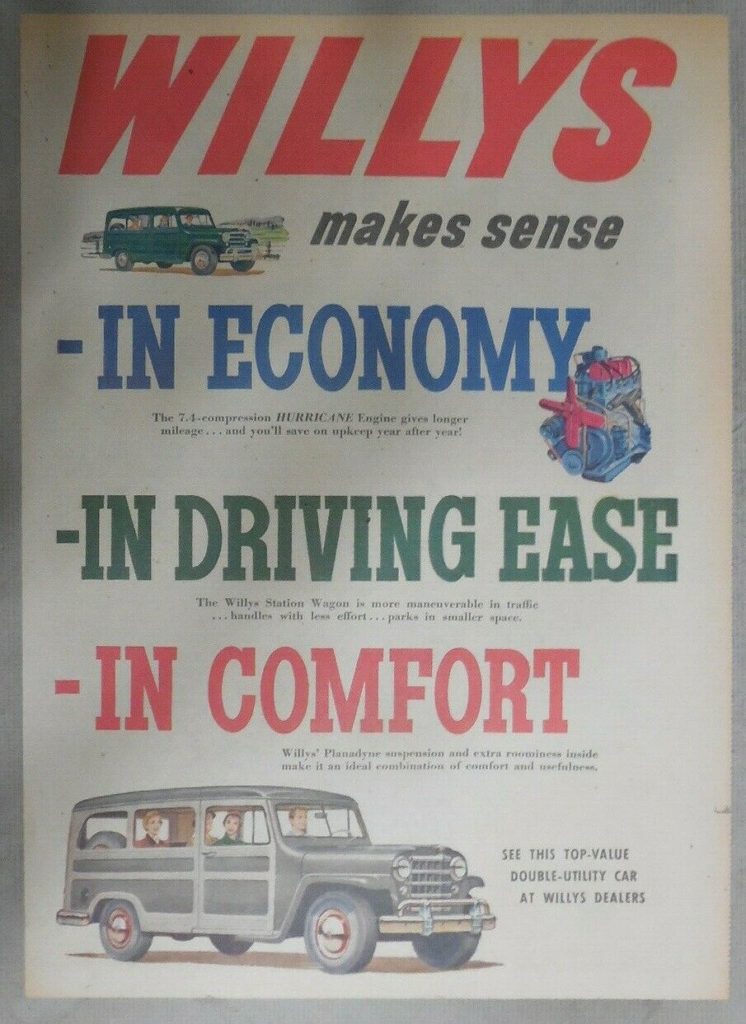
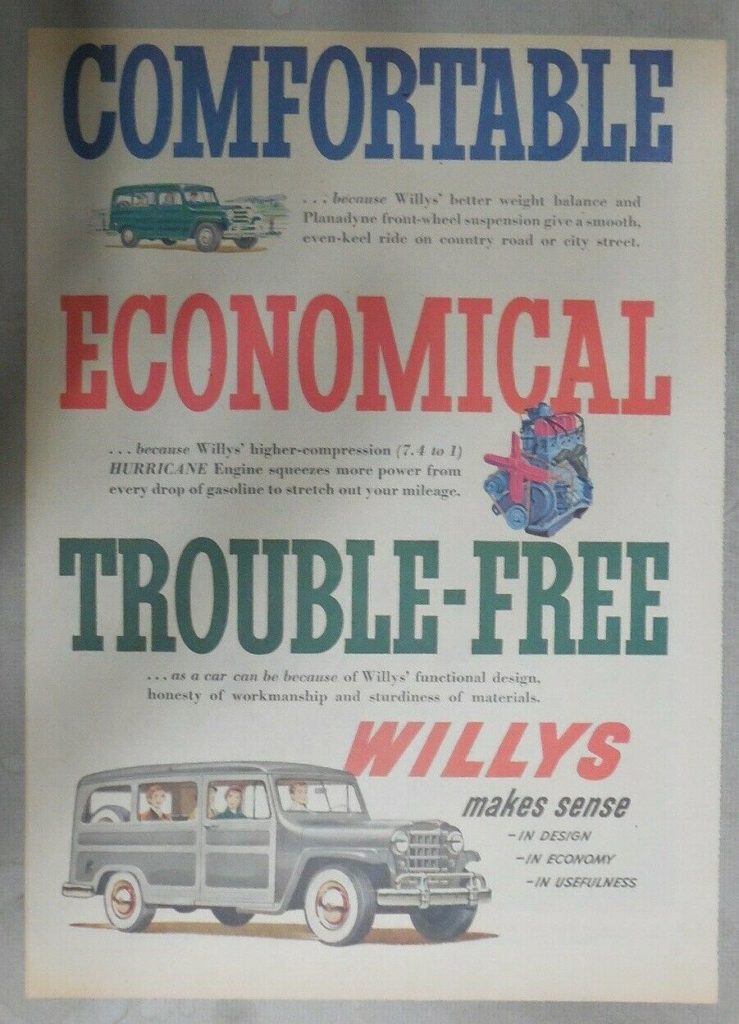
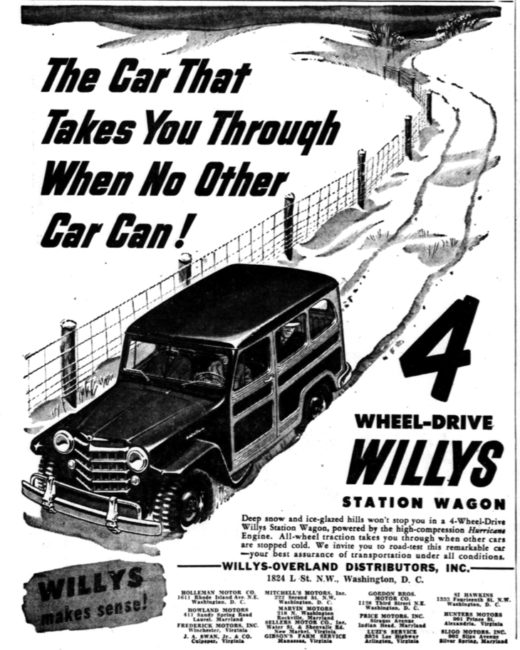

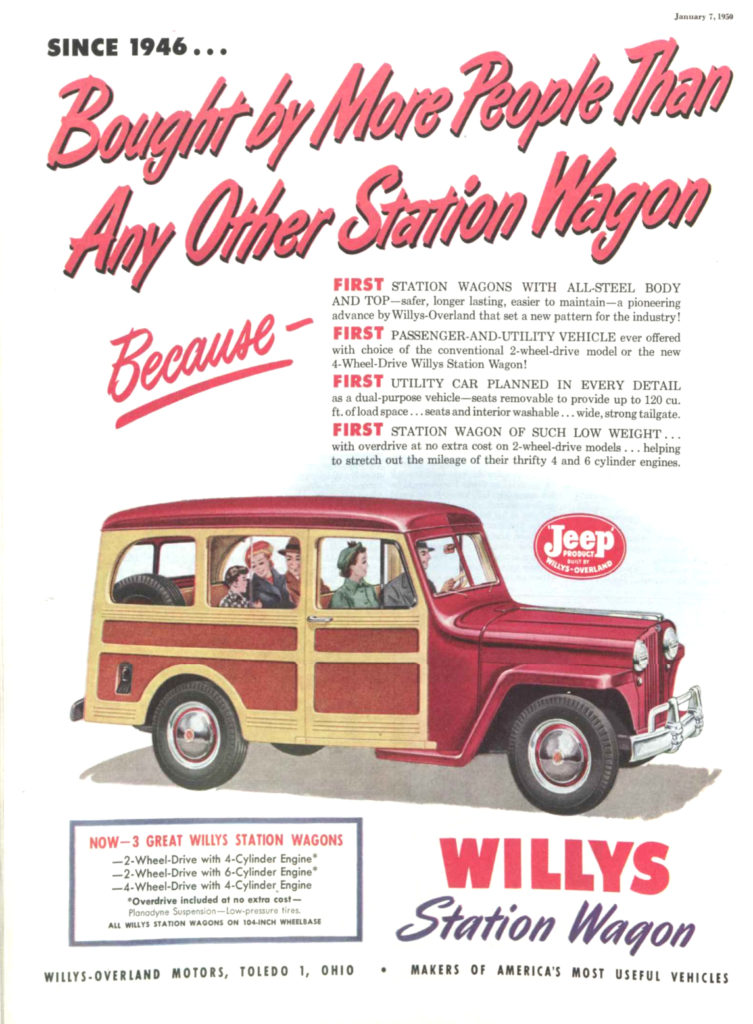
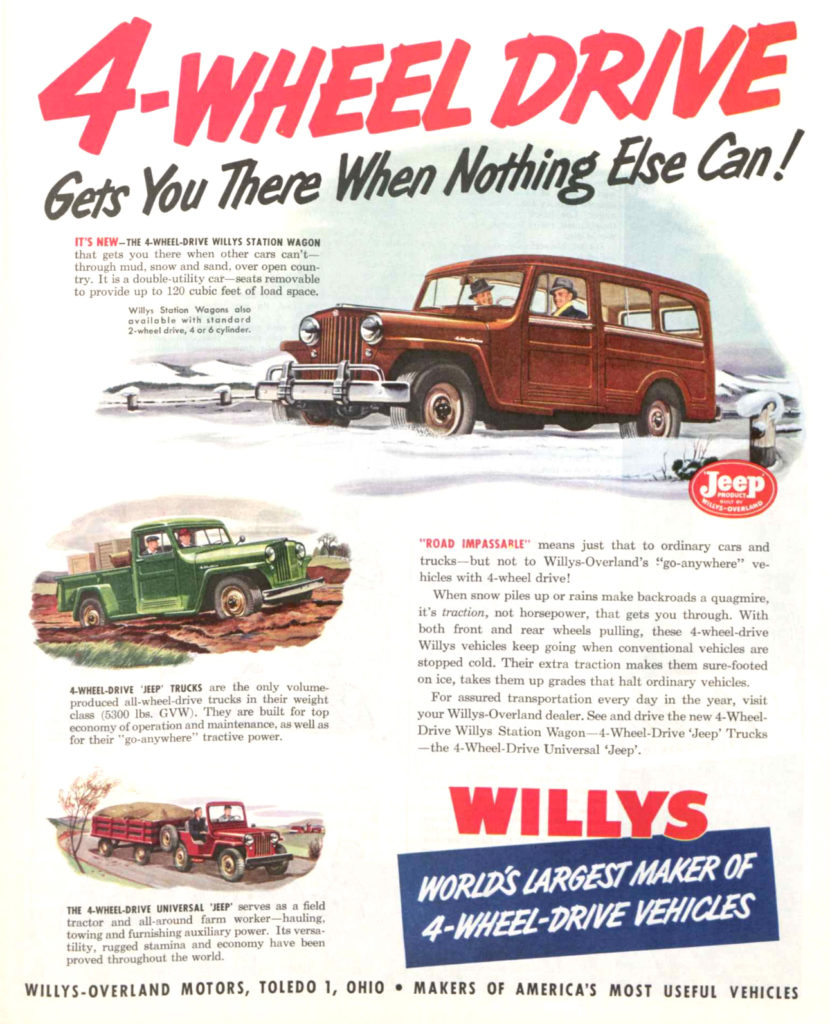
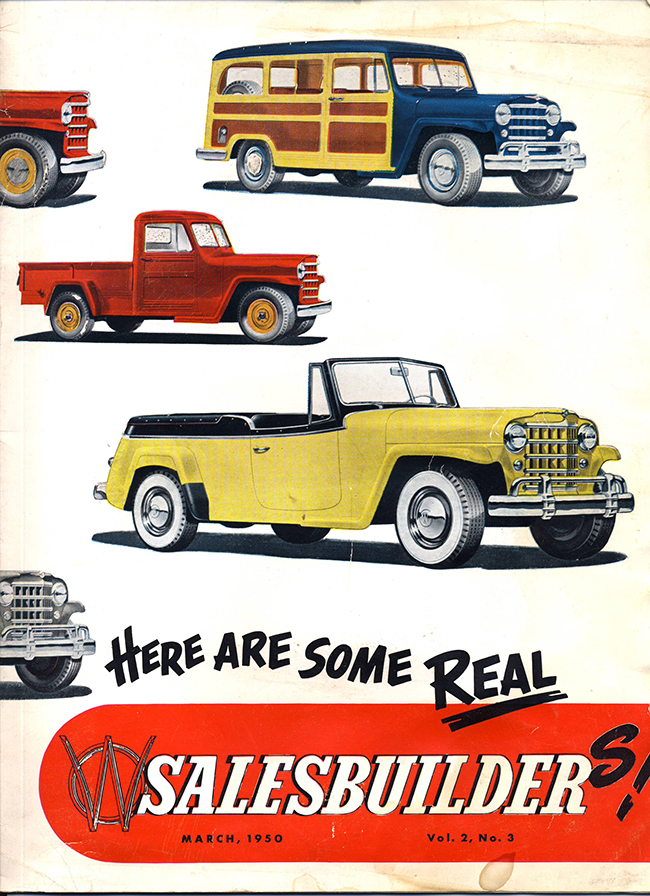
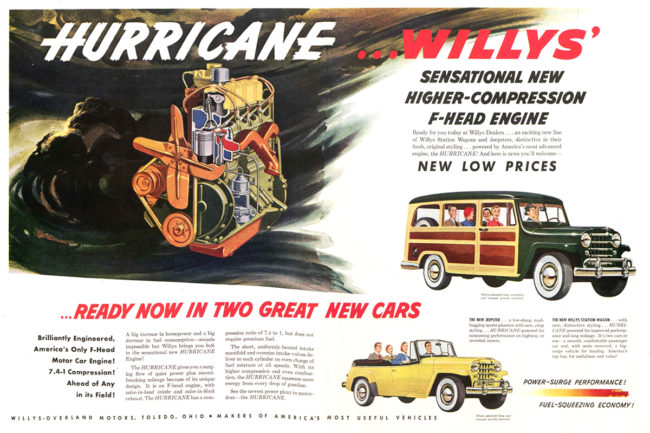
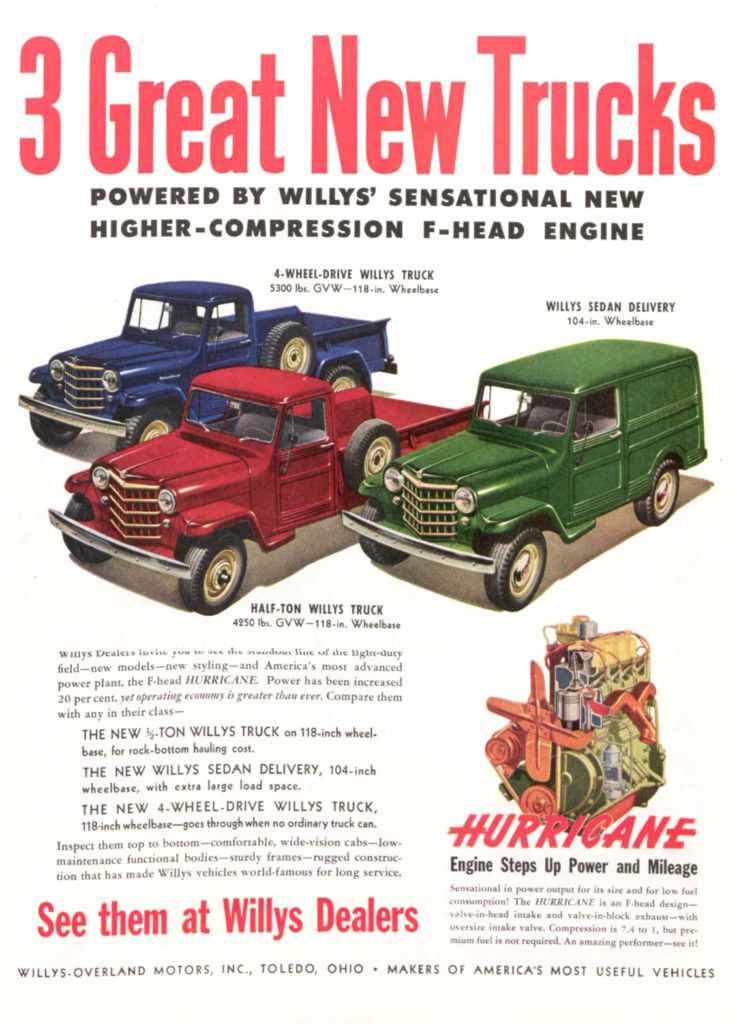
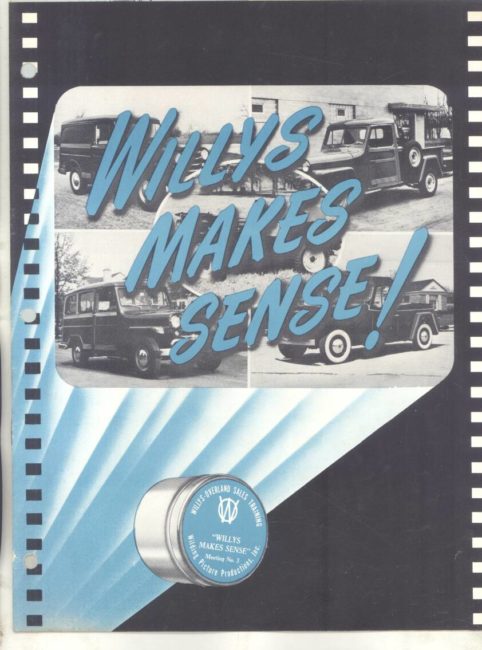
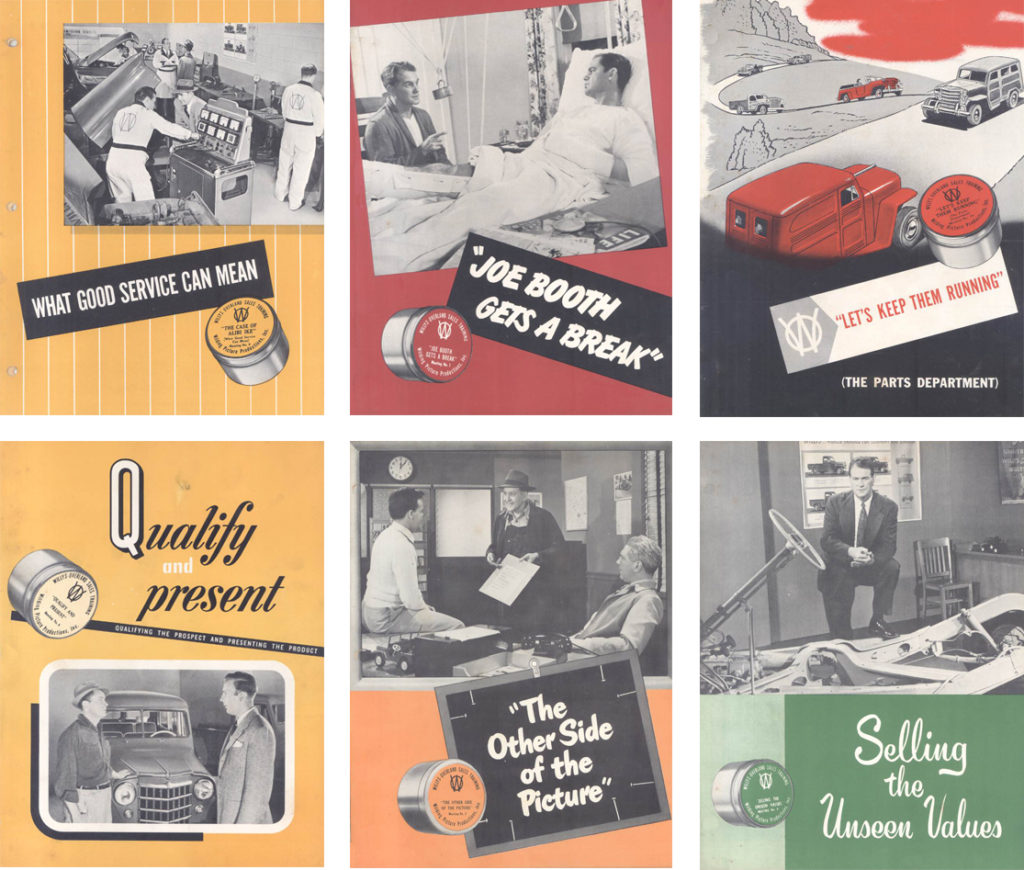
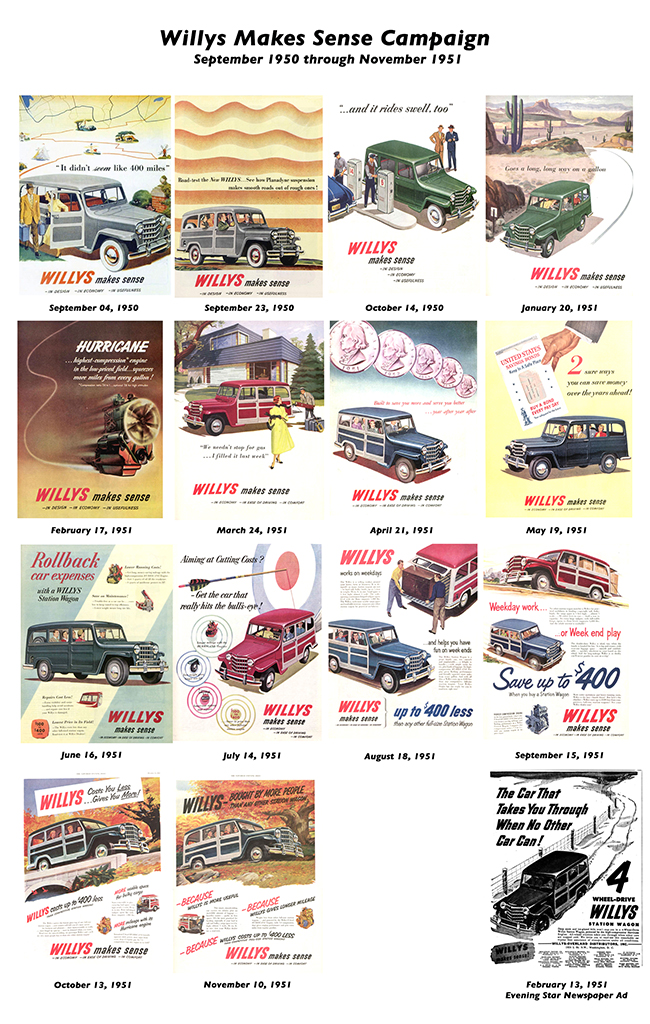
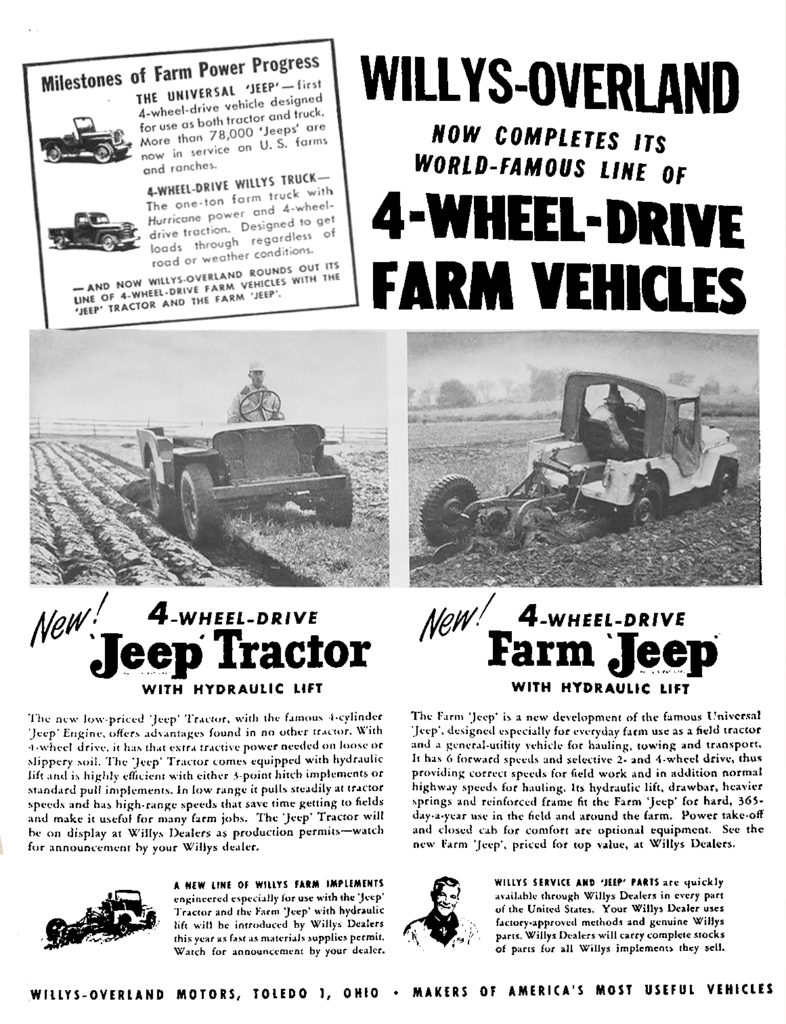
Fascinating, Dave. Thanks for bringing us along in your studies.
Very interesting indeed.
IMHO, Dave Eilers knows more about this subject than anyone else living!
Glad you both enjoyed this info. I’m really interested to see how the next two years of advertising evolved …
1) If and how did advertising change during 1953 pre-Kaiser, then
2) how did the ads change post Kaiser, but prior to Willys Motors big marketing transformation in Feb 1955 with the introduction of the press kits, followed up the September 1955 introduction of ‘pin-point’ advertising to address niches. Thankfully, I’ve got a bunch of Willys Jeep Newsletters which provide lots of information on this time period.
With respect to why sales dropped dramatically from 1948 into 1949… a huge factor was – Competition! You have to remember, 1949 was the year that The Big Three finally debuted their first fresh post-war models! And they sold well. The market had been waiting for a l-o-n-g time for that. The 1946, 47 and 48 were warmed over ’42s – a long wait.
Thanks Don. That makes sense … I also read that the big three got very aggressive with pricing in 1948, which forced Willys-Overland to do the same. There are Willys-Overland price-drop ads featured in newspapers from that year.
Don hit the nail on the head with his thoughts about the big three bringing all new models out for 1949 and at reduced prices from what Willys Overland could offer. Studebaker got caught up in that price war also. By 1950, Willys Overland pretty much ceased to exist and the company became Willys Motors Inc, and the export side of the company stayed as Willys Overland Export Corp. Willys had wanted to get back into passenger car production as before WWII, and they were unable to produce any vehicles with the compound curves that the big three were able to produce until after they got their own body presses. The Willys Aero was underway by 1950 and was in production by very late 1951. No Jeep branding on it either. The last station wagons and trucks with Jeep branding were the late 49-early 1950 models that had Jeep on the glove box doors along with “Jep Station Wagon, and Jeep Truck. The Jeepster had its own nameplates. For 1950, those were gone on the Jeepster and only the small brass tag that said “Jeep” Product was on the lower front quarter panel of the Jeepster. Willys Overland was removed from the rear bumpers and tailgates and they only read Willys from 1950 on. The W-O on the truck tailgates stayed until about 1953. Wagon and truck Door entry pads read Willys after 1950 but before had read Willys Overland in fancy script. Lots of changes and many with the influence of Henry J. Kaiser and Joe Frazer from 1950 forward.
Awarded in June of 60 or 1950?
Good catch Dave!
The two tone gray Willys wagon on the ads is just like the new 1951 wagon my family came to Arizona in January, 1952. It had the F-134 engine and overdrive. We towed a small trailer behind it with our worldly possessions in it. My dad rigged up a folding table mounted to the back of the front seat so my sister and I could play games and keep amused and not asking him “Are we there yet?”
Out of the last 76 years, there have only been about 3 1/2 years my family didn’t have a Jeep or Willys vehicle. I was born in England and my dad was a Military Police Captain. I came home from the hospital in a MP Jeep. When Dad got out of the service in 46, he bought a CJ2A because he couldn’t buy a car. Since then we have had several 2WD station wagons, a 51 Jeep Truck, CJ3A and Bs, CJ5, Wagoneers, Jeepster, DJ3A, and an M38. We only have the VJ2 Jeepster and the 60 DJ3A Surrey now.